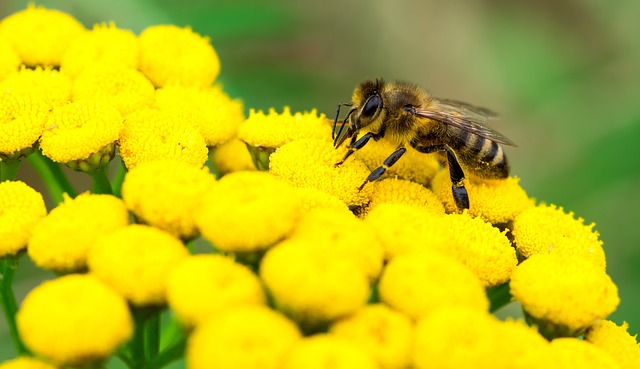Pollination is a critical process for the reproduction of flowering plants. It involves the transfer of pollen from the male parts of the flower to the female parts, leading to the formation of seeds and fruit. While some plants can self-pollinate or rely on wind for pollination, most rely on animal pollinators such as bees, butterflies, moths, birds, and even bats. In this article, we will explore some of the common pollinators and their behavior patterns.
Bees
Bees are one of the most important pollinators, responsible for pollinating approximately 30% of the world’s crops. They are attracted to flowers with bright colors and strong fragrances and are particularly drawn to yellow, blue, and purple flowers. Bees collect nectar and pollen from flowers to feed themselves and their larvae. They have a special structure on their hind legs called pollen baskets, where they store the pollen they collect. Bees are social insects and live in colonies, with one queen bee and thousands of worker bees.
Butterflies
Butterflies are also important pollinators, particularly for flowers with long, narrow tubes. They are attracted to bright, colorful flowers and prefer flowers that are in clusters. Butterflies have a long proboscis, which they use to reach the nectar deep inside the flowers. Unlike bees, butterflies do not have a special structure for carrying pollen. Instead, pollen sticks to their legs and bodies as they move from flower to flower.
Moths
Moths are nocturnal pollinators and are attracted to flowers with light colors and strong fragrances, particularly those that bloom at night. They have long tongues, similar to butterflies, which they use to reach the nectar deep inside the flowers. Like butterflies, moths do not have pollen baskets, and pollen sticks to their legs and bodies as they move from flower to flower.
Birds
Birds are important pollinators for flowers that bloom during the day, particularly those with a red or orange color. They are attracted to tubular flowers and have long beaks that allow them to reach the nectar. Birds do not have pollen baskets and instead carry pollen on their heads and feathers as they move from flower to flower.
Bats
Bats are nocturnal pollinators and are attracted to large, pale-colored flowers that produce a lot of nectar. They have long tongues that they use to reach the nectar inside the flowers. Bats do not have pollen baskets, and pollen sticks to their fur as they move from flower to flower.
In conclusion, pollination is a vital process for the survival of many plant species, and animal pollinators play a crucial role in this process. Understanding the behavior patterns of common pollinators can help farmers and gardeners create environments that are conducive to pollination, ultimately leading to successful crop yields and a healthy ecosystem.
